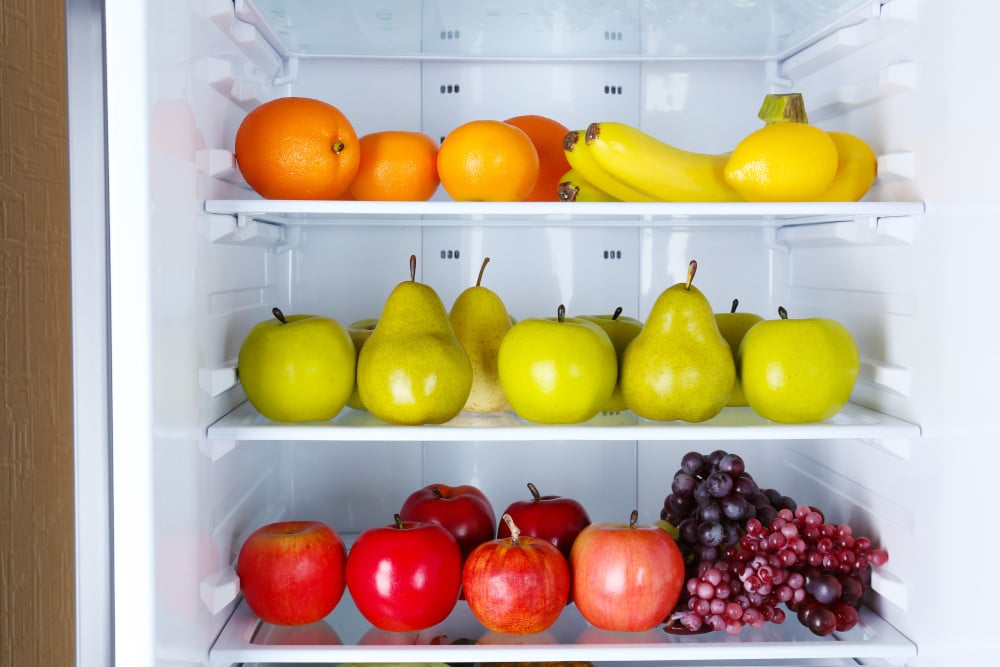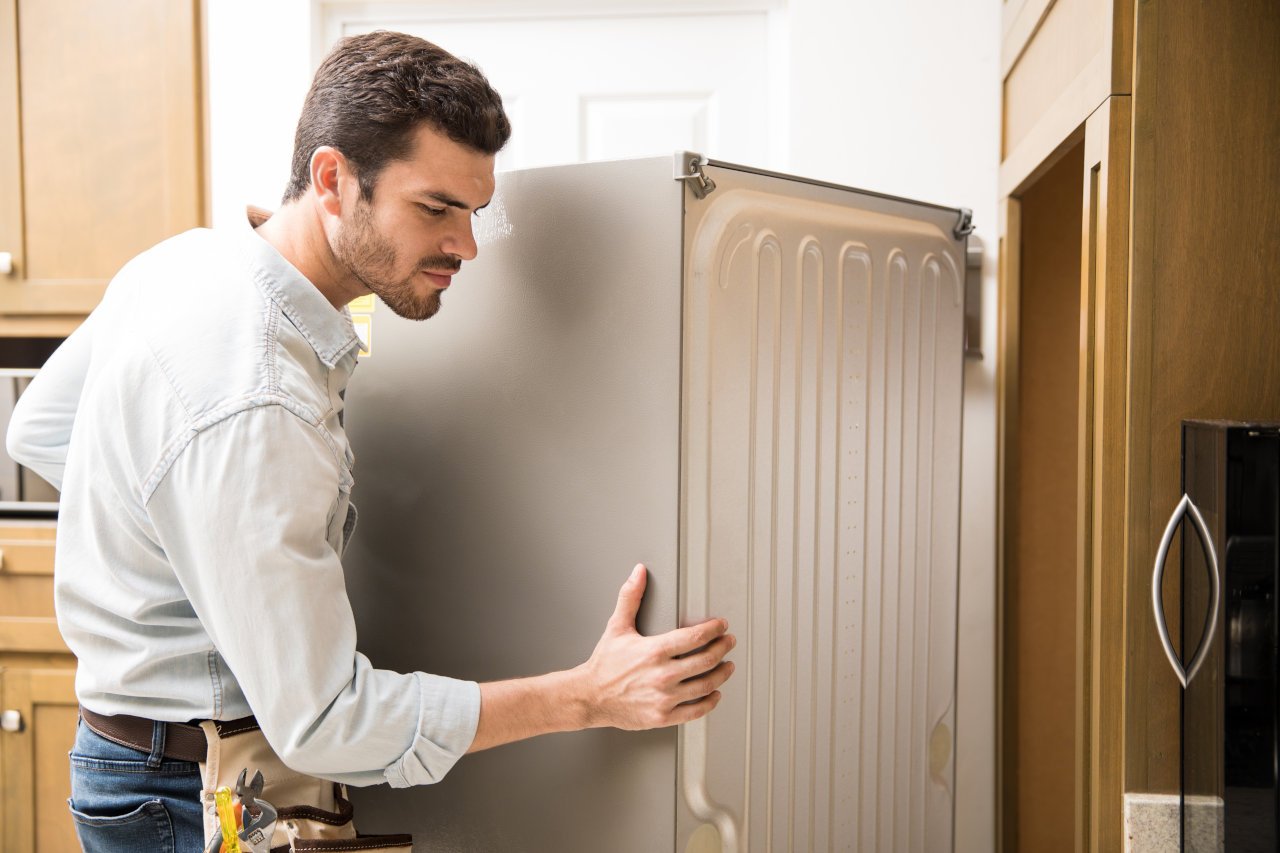How long to leave a fridge after moving home
Whilst you may want to turn your new fridge on straight away after delivery, it is important to allow your fridge to settle before switching the appliance on. Once your fridge has been safely moved into the kitchen of your new home and is in the desired position, you should let it stand unplugged, in an upright position to allow the compressor oil to settle.
How long should you leave a fridge freezer to settle?

You should leave your fridge/fridge freezer to settle for at least 4 hours. Once 4 hours have passed, you can plug your appliance in. When doing so, make sure that the thermostat control is set to on. Before placing food into the appliance, allow your fridge some time to cool down to temperatures safe for food storage. This may take up to 12 hours.
What are the elements of a fridge?
Refrigerators work by process of evaporation. By compressing and depressurising refrigerant, fridges create cool air which is then circulated to keep food fresh. To help you understand how a fridge works, we’ve explained the key elements of a fridge below. For more information, please read our dedicated article entitled ‘how does a fridge work?’
|
Fluid refrigerant |
Fluid refrigerant plays an important role in regulating the temperature in a fridge. To create a cold temperature, the fluid refrigerant changes from a fluid to gaseous form while circulating through different sections. |
|
Thermostat |
Fridges, static (non-frost free) freezers, and fridge freezers will feature a thermostat that controls the temperature of the refrigerator. The thermostat features a thin tube called a Phial, containing an inert gas. The Phial expands or contracts with temperature change, powering the compressor to alter the temperature of the appliance. A selection of fridges, and all frost-free freezers and fridge freezers, feature electronic control circuit boards and temperature sensors to control the temperature and freezer evaporator defrost cycle. |
|
Oil |
To protect the compressor from excessive wear, most fridges contain a compressor oil. This oil is specially formulated to lubricate the appliance’s compressor, protecting your fridge, and prolonging its lifespan. |
|
Compressor |
The compressor is the heart of a refrigerator, it compresses and pumps the refrigerant around the system, adding pressure to make the refrigerant hot. |
|
Evaporator fan motor |
Located near the top of the freezer evaporator, the evaporator fan motor distributes cold air around the freezer’s interior. Some fridges also have a fan motor to circulate the air. |
|
Condenser fan motor |
Not all refrigerators have condenser fan motors. Usually larger appliances have them fitted. The purpose of the Condenser fan motor is to aid the dissipation of heat generated from the refrigeration process. |
What happens when a fridge is moved?

When moving a fridge, make sure all food and groceries are removed from the appliance. These items can be stored in a cold bag during the moving period. Once this is done, disconnect your fridge from the mains and clean the interior, following the tips in our handy ‘how to clean a fridge’ article. Defrost your appliance if necessary following the guidance in our ‘how to defrost your fridge freezer’ guide. Before moving the appliance, make sure the temperature has dropped to room temperature, this may take several hours.
Do not attempt to move the refrigerator yourself. Instead, always ensure you have at least one person to help you relocate the appliance. For safety purposes, we recommend hiring professional movers to move your fridge, especially if you are travelling through tight spaces or up/down the stairs. Secure the door before moving the appliance and ensure the fridge is transported standing up.
Once your fridge has been safely moved into the desired position, it needs time to settle. As aforementioned, you should leave the appliance to stand unplugged, in an upright position, for at least 4 hours to allow its compressor oil to settle. Once 4 hours have passed, you can plug your appliance in. When doing so, make sure that the thermostat control is set to on.
Why do fridges need time to settle?
It is important to leave your fridge to settle after moving to protect the appliance’s internal parts and to ensure that the fridge continues to work to maximum efficiency. When moving a fridge, the compressor oil can leak into the refrigeration system, causing a blockage if the appliance is turned on too quickly. The oil in a refrigerator protects the appliance’s parts, working to ensure that the appliance does not break down or deteriorate when in constant use. By leaving your fridge to settle, you can ensure that the compressor oil returns to its original position, preventing damage to your appliance in the process.
Need more information?
For more information, including detailed videos that explain how to adjust the temperature in your fridge freezer and how to reverse the doors on your Beko fridge freezer, please read our detailed refrigeration how-to guide. Alternatively, for model specific information, please read your appliance manual. If you are concerned about your new Beko and you think it may have a technical problem, please find our contact details by clicking here. If you have misplaced your manual, don't worry you can download your appliance manual here.
Did you find this How-To guide useful?
Thank you for your feedback and we are sorry this How-To Guide wasn’t useful to you. If you would like further assistance, please head over to our Contact Us page.
Need Product Support?
If you have any questions about your Beko appliance, we are here to help. Finding answers and information is easy with Beko’s helpful online resources, simply browse our product support topics below and select the one that is relevant to you.
Manuals
Beko manuals contain helpful information and advice about your appliance.
View ManualsParts & Accessories
We stock genuine Beko spare parts and accessories for all of our models.
View Range NowFAQs
Browse the most asked questions about our product range.
Search FAQsRepairs
Information on our professional repair services.
View Repairs




